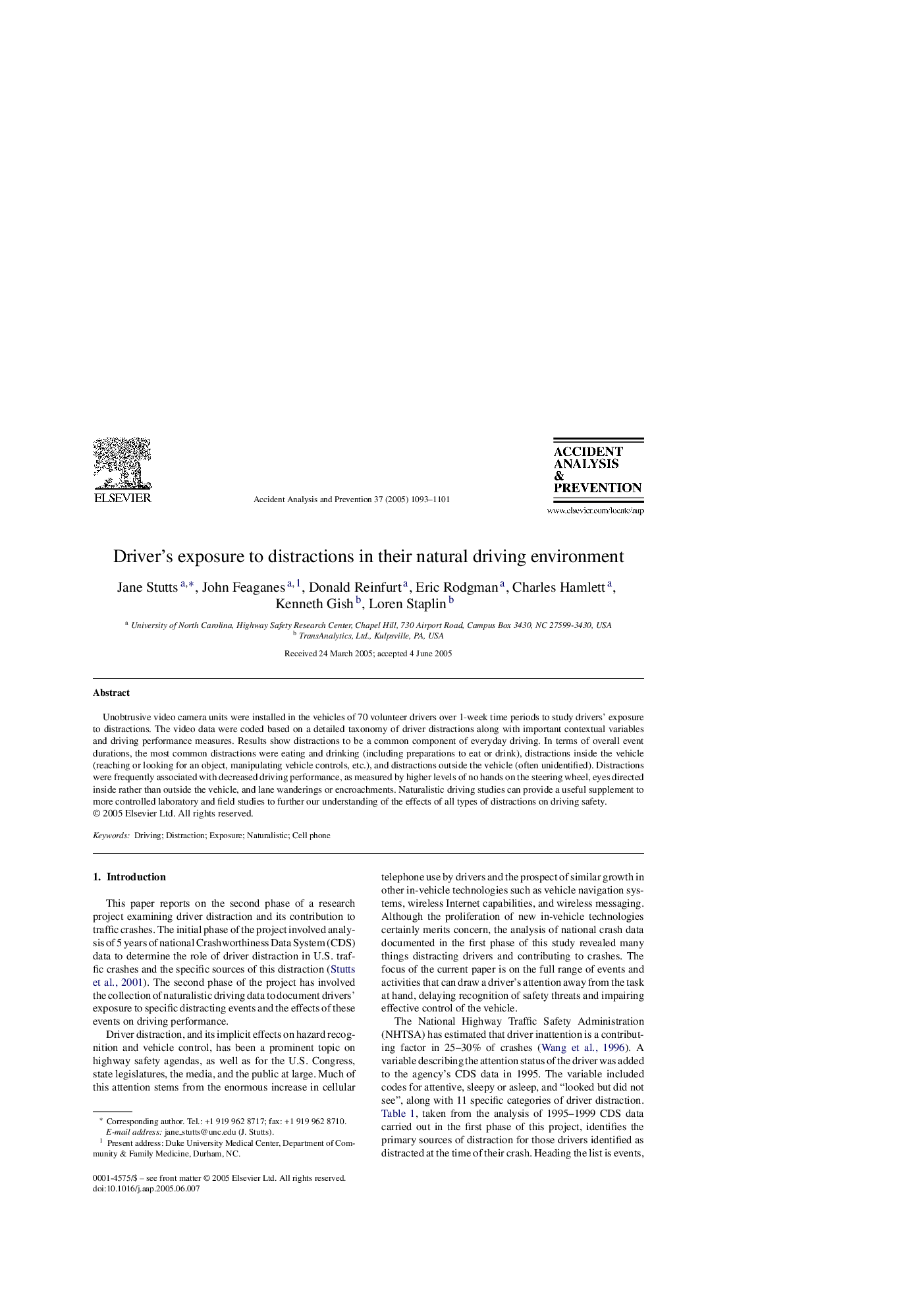| Article ID | Journal | Published Year | Pages | File Type |
|---|---|---|---|---|
| 10371567 | Accident Analysis & Prevention | 2005 | 9 Pages |
Abstract
Unobtrusive video camera units were installed in the vehicles of 70 volunteer drivers over 1-week time periods to study drivers' exposure to distractions. The video data were coded based on a detailed taxonomy of driver distractions along with important contextual variables and driving performance measures. Results show distractions to be a common component of everyday driving. In terms of overall event durations, the most common distractions were eating and drinking (including preparations to eat or drink), distractions inside the vehicle (reaching or looking for an object, manipulating vehicle controls, etc.), and distractions outside the vehicle (often unidentified). Distractions were frequently associated with decreased driving performance, as measured by higher levels of no hands on the steering wheel, eyes directed inside rather than outside the vehicle, and lane wanderings or encroachments. Naturalistic driving studies can provide a useful supplement to more controlled laboratory and field studies to further our understanding of the effects of all types of distractions on driving safety.
Related Topics
Physical Sciences and Engineering
Chemical Engineering
Chemical Health and Safety
Authors
Jane Stutts, John Feaganes, Donald Reinfurt, Eric Rodgman, Charles Hamlett, Kenneth Gish, Loren Staplin,
